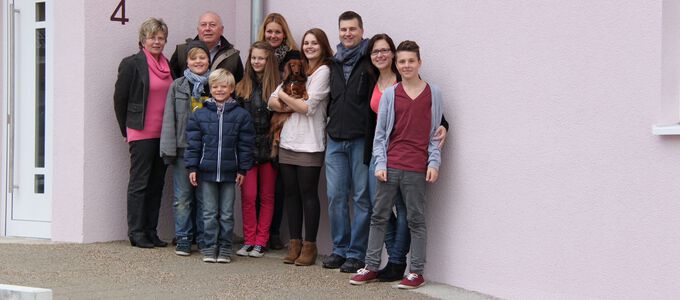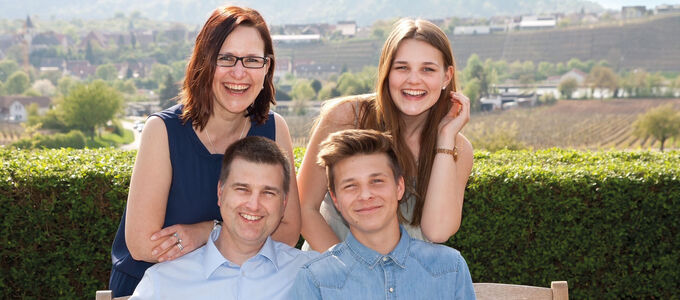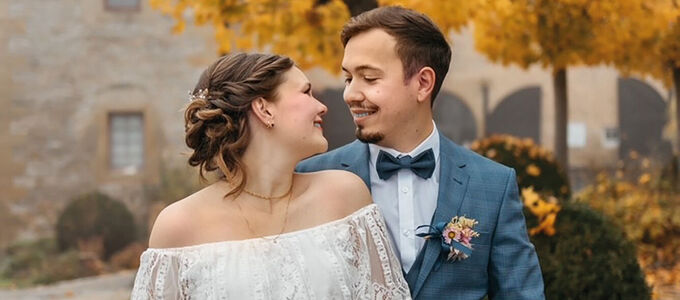
Tamara Hainz from the congregation of Lauffen in the south of Germany has been volunteering as a hospice worker for a few years now. She is 24 and talks about her volunteering and her experiences.
“Wow! I couldn’t do that.” That is most frequent reaction that Tamara hears when she says what she does. Many are impressed, yet in same breath they usually say they don’t think they would ever be capable of doing it themselves. “After all, it’s a matter of life and death and I have the feeling that many people, especially those my age, don’t even want to think about it. Or maybe they just can’t. They would rather keep the subject at an emotional distance and not allow it to get to them,” Tamara explains. She herself made the experience that her own attitude towards death and dying changed through her volunteering. She finds it easier to deal with now. “My biggest help is my faith. Life doesn’t end with death. I don’t know exactly what comes after, but I do know that there is something and it will definitely be good. That I am convinced of. This keeps me going and helps me not to fear.”
Her way to becoming a hospice volunteer
A hospice is a health care facility that focuses on the care of patients with life-limiting illnesses, and it is family centred. The hospice movement began in 1967 at St Christopher’s Hospice in London, England, and spread across the globe from there.
Tamara’s first personal encounter with dying and death occurred when her grandfather died after a long illness. “I was 17 years old at the time and experienced how hard it is to lose someone so close to you. Conversations with other people helped me to get over it.”
After graduating from high school, she took a gap year before she started her degree in special education. In that year, she took courses so she could volunteer in children’s hospice work. This is how it all started. “It has always been important to me to be there for people, and to do something with and for people. And working with children has the biggest impact, I feel.” A year before, Tamara’s parents had completed the volunteer hospice training programme. “I learned quite a lot about this work in our conversations and then I really gave the idea some serious thought,” she says.
Creating emotional bonds
After completing her volunteer training programme, Tamara was assigned to help a child of primary school age. “His mother is very sick. She cannot always look after him as reliably as would be good for him.” One afternoon a week, Tamara looks after the boy. She says: “The family support was very active right from the start. The child needed it: running around outside, playing soccer, going swimming. At the same time, it is important to pay attention to the child’s psychological needs: what stresses the child? Sometimes he felt better, sometimes not so good—all depending on his mother’s state of health. Making time for him and his needs—even putting up with him when he is angry—is all part of the support and stress relief.”
“The relationship I have established with him is very important for both of us. For me because I can better understand him, and for him, because he can rely on me,” Tamara says.
Being able to let go
“It can easily happen that the boundaries become blurred—fortunately, we managed to avoid this—that you as the volunteer become part of the family or become the mother’s best friend or may even be seen as a substitute mom,” Tamara says. “The aim for the external person is to give the family a few hours of your time and share emotional closeness, and help—and then to go back to your own life,” Tamara explains. “That I can actually do this only became apparent when I started with the work.” The drive home after an afternoon as a hospice volunteer has become important for Tamara. “I don’t drive home straight away, but sit for a while and give myself time to process the impressions. My own family is a big help, which is really encouraging.”
Tamara does not feel alone with her volunteering. When she feels the need, she can contact the full-time hospice staff any time. “They know us volunteers very well and also have a good eye for who can be assigned to which family in which special situation,” Tamara explains. After completing her volunteer training programme, she did not feel ready to support an adult right away. By helping the child of a seriously ill mother, she was able to get a feel for things and make her first experiences.
“It depends on whether you are on the same wavelength,” Tamara says. Volunteering has allowed her to mature personally. “At the same time, I noticed how important the support of my family is. I realised how fulfilling it is to be able to be there for people. This is really my kind of thing.”
This article was originally published in the German magazine “Unsere Familie”, edition 04/2022.














